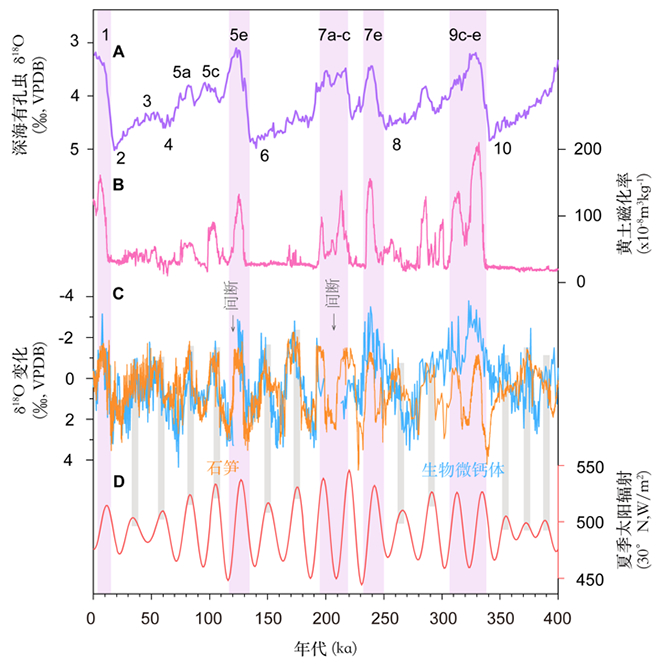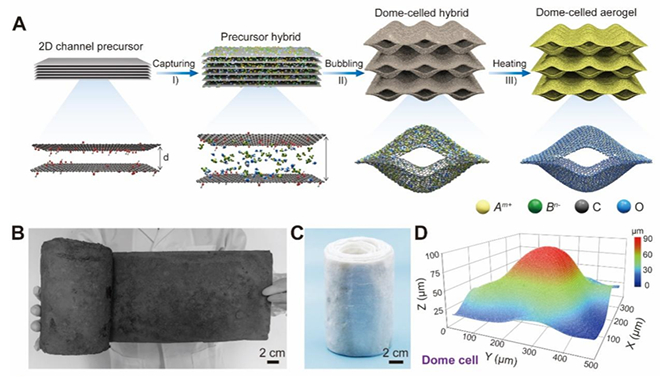The 2025 EU-US Frontiers of Engineering symposium will be held in Europe, dates and location to be determined. Sixty of the most promising early career engineers from the US and EU will meet for an intensive 2-1/2 day symposium to discuss cutting-edge developments in four topic areas. The event facilitates international and cross-disciplinary research collaboration, promotes the transfer of new techniques and approaches across disparate engineering fields, and encourages the creation of a transatlantic network of world-class engineers. The symposium will be hosted in partnership with the European Council of Academies of Applied Sciences, Technologies and Engineering and The Grainger Foundation. More information will be posted at a later time.
发布时间:2025-10-20 美国国家工程院 发布时间:2025-09-22
TriboNet
发布时间:2025-09-22
TriboNet
The Grainger Foundation Frontiers of Engineering 2025 Symposium will be held at the University of Pennsylvania in Philadelphia, September 14-17. About 100 outstanding early career engineers will meet for an intensive 2-1/2 day symposium to discuss cutting-edge developments in four areas: Advances in Neural Engineering; Next-Generation Computing/Quantum Computing; Fusion Energy; and Sustainable Aerial Mobility. The goal of the Frontiers of Engineering program is to bring together engineers from all engineering disciplines and from industry, universities, and federal labs to facilitate cross-disciplinary exchange and promote the transfer of new techniques and approaches across fields in order to sustain and build US innovative capacity. We are grateful to The Grainger Foundation for its support. More information will be posted as it becomes available. DRAFT LIST OF SESSIONS (Working topics listed. Order of speakers and sessions TBD.) Chair: Karen Willcox, University of Texas at Austin ADVANCES IN NEURAL ENGINEERING Session co-chairs: Annabelle Singer, Georgia Institute of Technology, and Joshua Kline, Delsys Inc. Proposed Speakers: Flexible, transparent neural interfaces seamlessly integrate with tissue while simultaneously allowing optical access to the brain Daniel Gonzalez, Vanderbilt University Biochemically functionalized probes for cell-type–specific targeting and recording in the brain Anqi Zhang, California Institute of Technology Agonist-antagonist myoneural interface amputation preserves proprioceptive sensorimotor neurophysiology in lower limbs Shriya Srinivasan, Harvard University MyoSuite--A contact-rich simulation suite for musculoskeletal motor control Vikash Kumar, Carnegie Mellon University NEXT-GENERATION COMPUTING/QUANTUM COMPUTING (WORKING) Session co-chairs: Jean Anne Incorvia, University of Texas at Austin and Shavindra Prematatne, Intel Proposed Speakers: TBD Mollie Schwartz, Massachusetts Institute of Technology TBD Timothy Proctor, Sandia National Laboratories TBD Catherine Schuman, University of Tennessee Knoxville TBD Deep Jariwala, University of Pennsylvannia FUSION ENERGY Session co-chairs: Andrea Schmidt, Lawrence Livermore National Laboratory, Patrick Snouffer, Zeno Power Systems Proposed Speakers: TBD Derek Sutherland, Realta TBD Adam Rutkowski, Marathon Fusion TBD Sara Ferry, Massachusetts Institute of Technology TBD Caroline Sorenson, Commonwealth Fusion Systems SUSTAINABLE AERIAL MOBILITY Session co-chairs: Phillip Ansell, University of Chicago-Illinois, and Mr. Kevin Antcliff, Joby Aviation Proposed Speakers: (preliminary talk topics) (Aviation technology, power and energy systems, and advanced aircraft concept formation) Anna Oldani, U.S. Federal Aviation Administration, Office of Environment and Energy (Aviation technology, power and energy systems, and advanced aircraft concept formulation) Hubert Wong, Boeing (Life cycle assessment, techno economics of sustainability, economic impacts and operational networks of aviation) Florian Allroggen, Massachusetts Institute of Technology (Advanced air mobility, battery-electric aircraft systems, airline operations) Cedric Justin, Georgia Institute of Technology
发布时间:2025-09-14 美国国家工程院
图 40万年以来气候记录对比。(A)深海有孔虫δ18O记录 (Lisiecki and Raymo, 2005);(B)黄土高原西部黄土磁化率 (Sun et al., 2021);(C)生物微钙体δ18O记录(蓝色)和石笋δ18O记录 (橙色)(Cheng et al., 2016);(D)夏季太阳辐射 (Laskar et al., 2004) 长期以来,东亚石笋δ18O记录被广泛视为反映夏季降水与亚洲夏季风强度的“基准气候档案”。然而,该记录未呈现全球气候系统中普遍存在的冰期-间冰期气候节律,其真实气候意义究竟为何,长期困扰国际学界。现代观测显示,在华南地区,δ18O值偏负的夏季降水(6-8月)仅占全年降水的不足50%;而非夏季降水占比较高,且δ18O值显著偏正。由于石笋主要是由不同季节降水混合形成的地下滴水溶液沉淀而成,这意味着石笋δ18O记录反映的本应是多季节降水的综合信号,长期以来将其简单解释为夏季降水δ18O信号的做法存在偏差。然而,受制于缺乏独立记录夏季降水δ18O变化的地质记录,其“多季节混合效应”一直未被充分认识。 在国家自然科学基金项目(批准号:42203062)等资助下,中国科学院地球环境研究所学者联合国内外合作者,围绕“东亚石笋氧同位素(δ18O)记录缺失冰期气候旋回”这一国际热点科学问题,开展了地质记录与数值模拟相结合的系统研究并取得进展。相关成果以“黄土生物微钙体δ18O揭示东亚石笋δ18O中的夏季和非夏季气候信号(Summer and nonsummer climatic signals in speleothem δ18O revealed by loess microcodium δ18O in East Asia)”为题,于2025年7月11日发表于《美国科学院院刊》(Proceedings of the National Academy of Sciences)。论文链接:https://doi.org/10.1073/pnas.2425565122。 研究团队创新性地利用中国黄土中生物微钙体(一种形成于夏季的次生碳酸盐)的氧同位素组成,重建了过去40万年以来夏季降水δ18O变化。结果显示,生物微钙体δ18O记录在2.3万年岁差周期上与石笋δ18O记录表现出相似的变化,但其在间冰期强夏季风时期出现了明显偏负的δ18O值,展现出显著的10万年冰期-间冰期气候周期特征(图C,蓝色),与石笋δ18O记录(图C,橙色)仅仅显示2.3万年岁差周期不同。结合气候模拟,研究明确指出:东亚石笋氧同位素记录并非单一夏季信号,而是多季节降水混合的结果,导致原本应有的冰期–间冰期节律被削弱。 该研究提出的“多季节混合效应”机制,厘清了东亚石笋氧同位素记录的物理学本质,纠正了国际上将其等同于夏季风强度指标的长期认知偏差,解开了该领域的重要科学争议,为重新理解东亚乃至全球石笋气候记录提供了新思路,是我国在国际古气候研究领域取得的原创性突破。

图 石墨烯基二维通道受限化学法。(A)微穹顶气凝胶制备过程;(B)碳化物烯陶气凝胶块体;(C)氧化物气凝胶卷材;(D)微穹顶结构胞元三维光学图 在国家自然科学基金项目(批准号:52090031、52090030、52122301、52272046)等资助下,浙江大学高分子科学与工程学系高超教授团队在气凝胶材料研究中取得进展,相关研究成果以“微穹顶结构气凝胶实现2273 K超高温超弹性(Dome-celled aerogels with ultrahigh-temperature superelasticity over 2273 K)”为题,于2025年7月18日在线发表于《科学》(Science)杂志上,论文链接:https://doi.org/10.1126/science.adw5777。 气凝胶,一种轻质多孔材料,被誉为“固态烟雾”或“冻结的蓝烟”。然而,其发展与应用仍面临三大挑战:一是缺乏简便且通用的制备方法;二是微孔结构弹性不足;三是尚未突破超高温高弹材料的性能极限。为此,浙江大学高分子系高超教授团队经过长期探索与实践,提出了一种简便普适的氧化石墨烯基二维通道受限发泡法,首创新型微穹顶胞元结构,成功合成出数百种高弹性气凝胶。该团队与西安交通大学刘益伦教授团队合作,开展了穹顶结构的力学计算模拟。 该工作成功合成了一系列超轻的微穹顶胞元结构气凝胶,涵盖121种氧化物、38种碳化物和35种金属体系。基于二维层间受限反应及混合熵原则,实现了高熵材料组分的可控设计,其组分可调至含有多达30种元素的高熵态,极大扩展了气凝胶的种类。深入研究揭示,该类超轻气凝胶是由二维层状晶体以微穹顶几何胞元结构所构筑的一类新型材料,表现出超高的弹性压缩率(99%),在传感、催化和热管理等方面展现出优异的功能特性。这类新型烯陶气凝胶材料(即石墨烯与陶瓷原子级别的二维杂化),在宽温域范围内展现出优异的力学弹性,不仅在常温下可经受99%弹性应变的20,000次循环,而且在4.2 K的深冷环境至2273 K的超高温环境中仍保持99%的弹性应变性能。 该材料突破了陶瓷重结晶及碳材料石墨化失效温度极限,其中石墨烯显著抑制了二维陶瓷的高温重结晶过程,而二维陶瓷则有效防止了石墨烯片层的超高温滑移,从而解决了超轻材料的超高温弹性难题。此外,具有二维微穹顶结构的高熵气凝胶在隔热性能上同样展现出显著优势,这主要得益于二维各向异性热传输及高熵组分晶体效应。所制备的高熵氧化物气凝胶在室温下的导热率仅为13.4 mW/m×K(空气为26 mW/m×K),高熵碳化物烯陶气凝胶在1273 K时的导热率为53.4 mW/m×K,在2273 K时为171.1 mW/m×K,并在经历2273 K下100次热冲击后仍保持结构稳定,为极端温度环境下的热防护提供了新的材料选择。